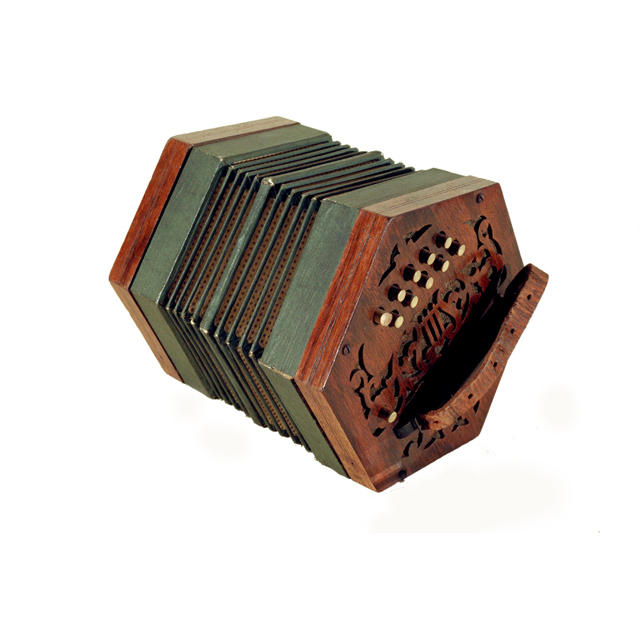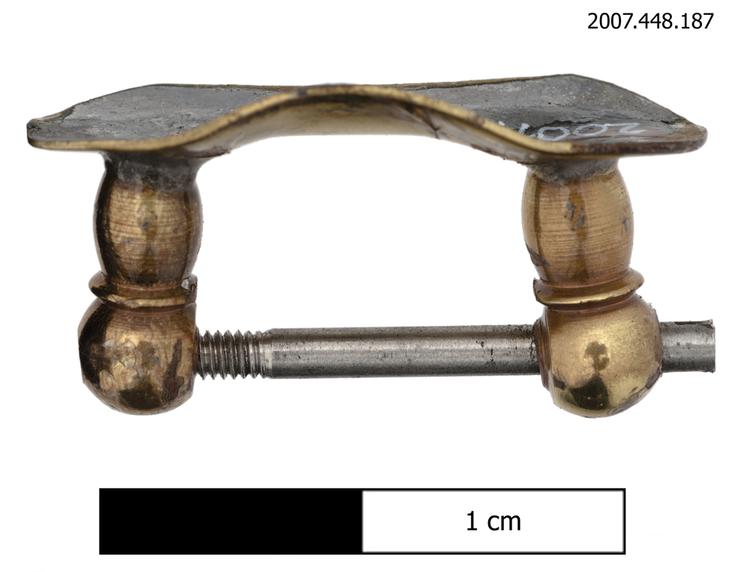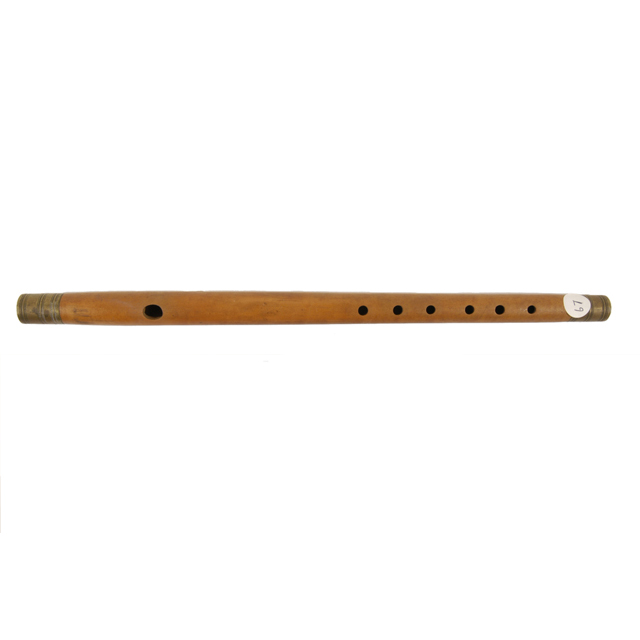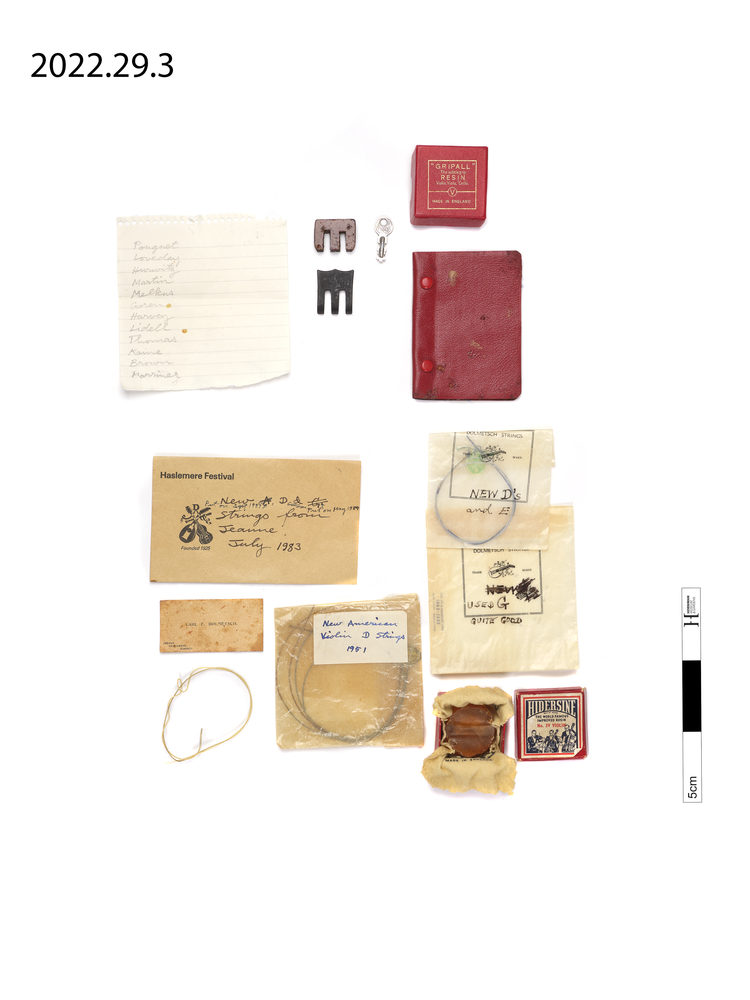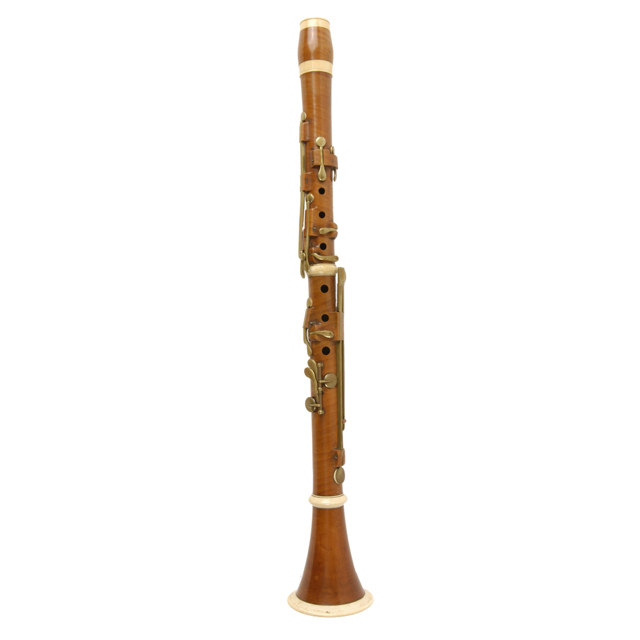
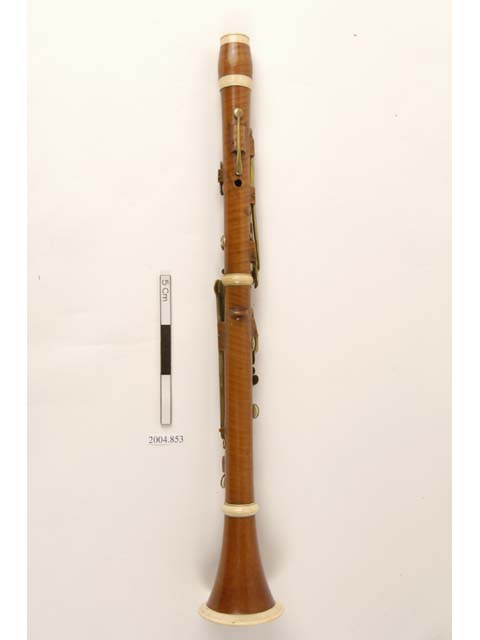
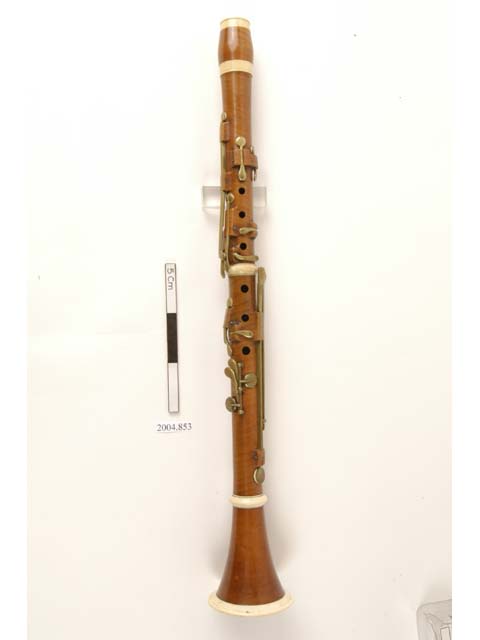
Clarinet in B-flat. Boxwood or sycamore body. Ivory ferrules. Fourteen block and pillar mounted brass keys with circular cups (slightly domed) and leather pads. Block mounts are turned away, some square in profile and others rounded. Rollers on lower keys. Carved thumb-rest. Four joints excluding missing mouthpiece. Tenons lapped with waxy red thread. Paper label on lower joint written in ink reads: BOOSE/30ln
This clarinet appeared at the Royal Military Exhibition at Chelsea Barracks in 1890. The catalogue states that, although no maker's stamp appears on the instrument, it was known to have been made by Euler of Frankfurt. The Euler workshop was established by Philip Otto Euler in 1810 and was continued after his death by his son August Anton. It is said that Arthur Schopenhauer, when residing in Frankfurt, played a Euler flute.



